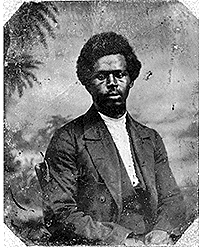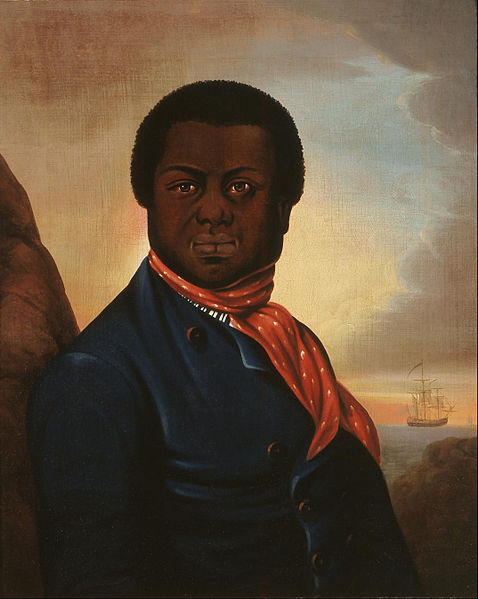All month long we’ve be sharing interesting facts, stories, and resources about Black History Month on social media under the hashtag #BBGBlkHistory. Follow us on Facebook and Twitter to share your own interesting facts.
Have you ever heard about Captain Paul Cuffee? Cuffee was a sailor, businessman, and abolitionist who sued for the right to vote in 1780, just years after America declared its independence from Britain.
Cuffee was born on January 17, 1759 on Cuttyhunk Island in Massachusetts. His father, Kofi, was from the West African Ashanti ethnic group, who hailed from the Kingdom of Ashanti of south Ghana, and his mother was a Native American woman from the Wampanoag Nation. Cuffee’s father, Kofi, was captured and enslaved when he was just 10 and brought to Massachusetts. Kofi was freed in the 1740s after the man who owned him could no longer reconcile slavery with his religious beliefs.
When Cuffee was 16, he began his maritime career. He began working on a whaling ship, and later worked on cargo ships where he learned how to navigate. In 1779 Cuffee and his brother built a boat and he began delivering cargo to Nantucket.
 At 21, after having created a successful business, Cuffee refused to pay taxes because Black people in America were not free. On February 10, 1780 he petitioned the council of Bristol County, Massachusetts to end taxation without representation for African Americans. Unfortunately, his request was denied, but it laid the groundwork for the Massachusetts Legislature to grant voting rights to all free male citizens in 1783.
At 21, after having created a successful business, Cuffee refused to pay taxes because Black people in America were not free. On February 10, 1780 he petitioned the council of Bristol County, Massachusetts to end taxation without representation for African Americans. Unfortunately, his request was denied, but it laid the groundwork for the Massachusetts Legislature to grant voting rights to all free male citizens in 1783.
Despite laws that did not see Black Americans as equal, Cuffee continued building his maritime empire, eventually owning a fleet of ships. By the beginning of the nineteenth century Cuffee was one of the wealthiest men of color in the U.S.
In spite of his vast wealth and success, Cuffee’s faith drove him to give back to his fellow man. He devoted the remainder of his life trying to repatriate free Black people back to Africa where he hoped to set up new colonies. His dream was to send one shipload of Black people back to Sierra Leone, a newly formed colony, each year.
From PBS.org:
In 1811 Cuffee founded the Friendly Society of Sierra Leone, a cooperative black group intended to encourage “the Black Settlers of Sierra Leone, and the Natives of Africa generally, in the Cultivation of their Soil, by the Sale of their Produce.” He made two trips to the colony that year.
In 1812, after returning from Sierra Leone, Cuffee traveled to Baltimore, Philadelphia and New York to form an African-American version of the British “black poor” organization. Named the “African Institution,” it had self-contained branches in each city, and was charged with mounting a coordinated, black-directed emigration movement.
On Dec. 10, 1815, Cuffee made history when he transported 38 African Americans from the U.S. to Sierra Leone on one of his ships. The voyage cost him $5000. The group arrived nearly two months later on Feb. 3, 1816, and the passengers became the first African Americans who willingly returned to Africa through an African-American initiative.
Unfortunately, Cuffee’s dreams of a large-scale migration back to Africa were never realized, but his legacy continues to live on.



